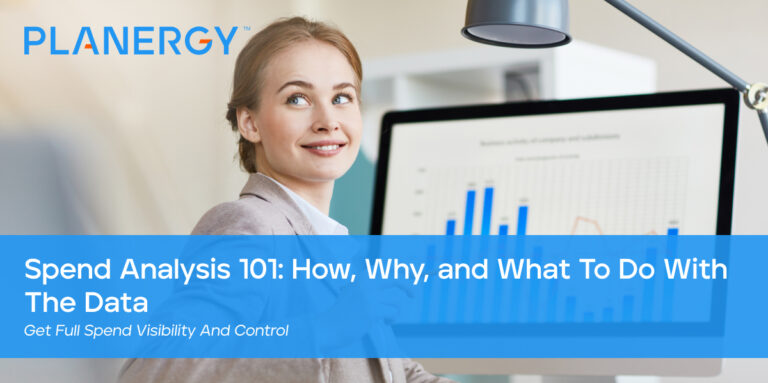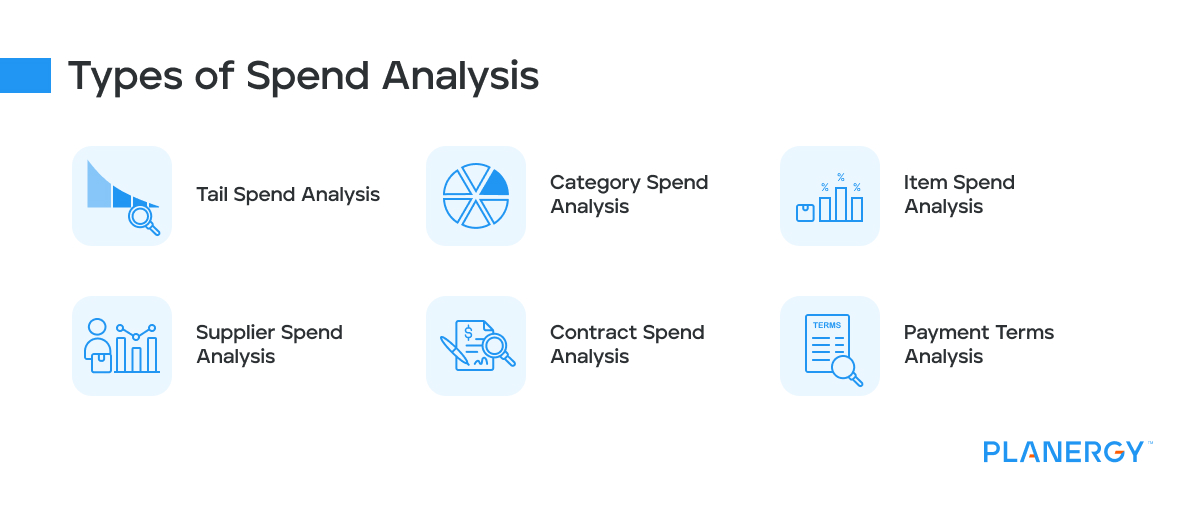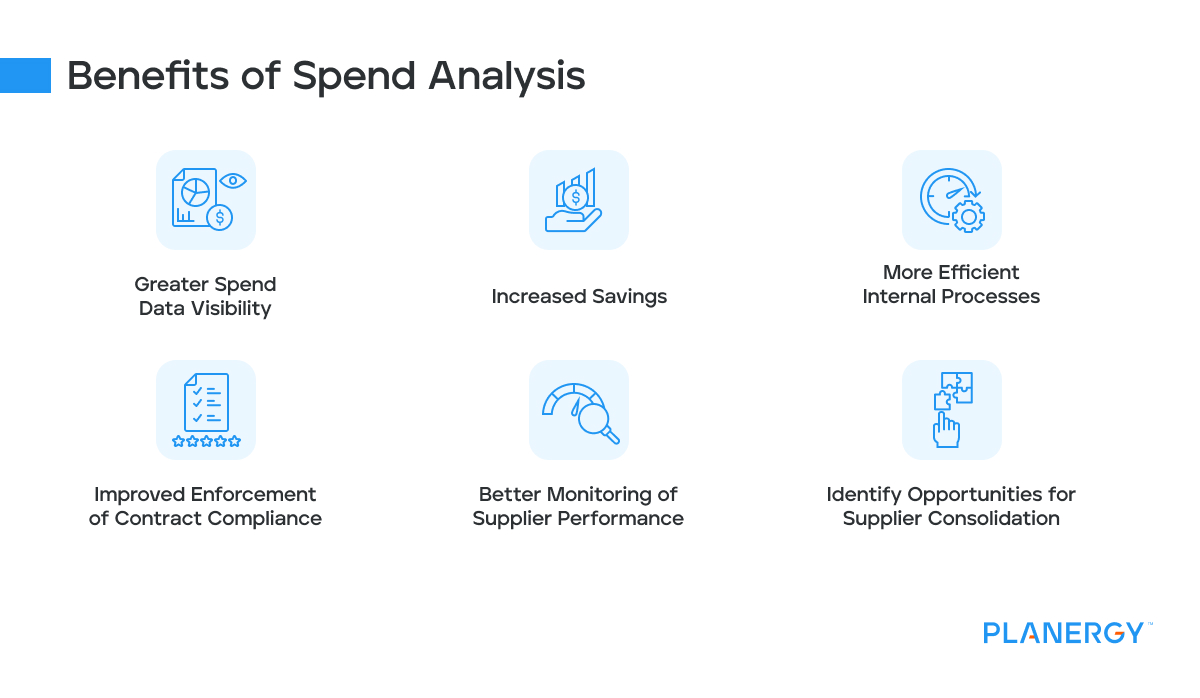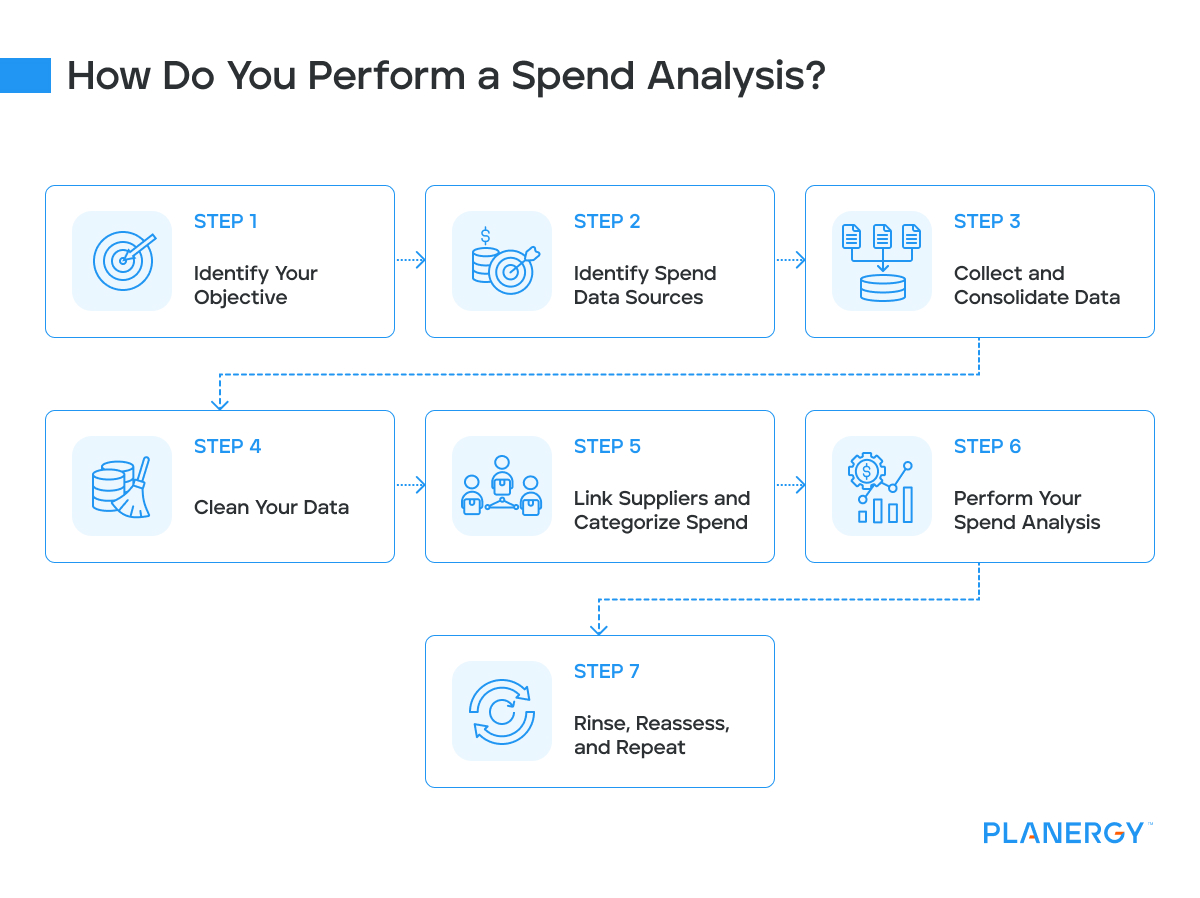Companies of all sizes and types can achieve effective and accurate spend analysis by following a series of simple processes based on spend cube analysis.
Identify Your Objective
Spend analysis is not a one-size fits all affair. It works best when you have a specific goal in mind.
For example, you could be looking for patterns within the data to support process improvement. Or, you could be looking to consolidate down to the suppliers who are giving you the best deals.
Some potential objectives could include:
- Identify spending patterns and find cost savings opportunities in specific categories, items, or departments.
- Find potential savings by eliminating maverick spend and invoice fraud.
- Reducing supply chain risk.
- Improving the accuracy and completeness of your spend forecasts.
- Cutting procurement costs through process improvements like optimizing invoice approval cycle times or eliminating bottlenecks in the purchase order creation process.
- Reduce your number of suppliers by removing ones that charge more for the same goods or services.
Identify Spend Data Sources
This includes all spend data sources from across all business units, departments, and teams.
Data sets will likely include:
- Accounts payable invoices
- Spend data from your eProcurement solution
- The general ledger
- Pcard and credit card transactions
- Enterprise Resource Planning (ERP) software
- Any Excel spreadsheets or other documents not incorporated into your eProcurement system
Collect and Consolidate Data
Data management and spend analysis itself will work much better if you use a procurement solution like PLANERGY with automated spend analysis. With an end goal of achieving predictive analytics in procurement.
Trying to glean insights from a jumble of spreadsheets and other data sources will be much more difficult.
If you don’t already have a centralized, cloud-based procurement solution in place, develop processes to either transfer all information into a common format or integrate all your data sources to avoid errors, inconsistencies, duplicates, and other potentially disastrous data errors.
If you do use a procurement solution, collecting and consolidating your spend data will have already happened automatically. You’ll simply look back at your existing spend data to use for your spend analysis.
Clean Your Data
If you’re just starting to use a procurement solution with a spend analysis tool, like PLANERGY, you will most likely be importing your data from other sources. So before you can use that data in your system, you may need to clean it.
After all, useful insights can only come from complete and accurate data sets. Once you’ve collected all your data, review it for transaction, category, and item-level errors, then correct them.
Standardize your clean data for easy analysis, viewing, and importing into your procurement software (if you need to).
Link Suppliers and Categorize Spend
This step is especially important if you’re looking for insights related to supplier management. By implementing better category management practices you will help identify opportunities.
However, grouping suppliers together based on purchase data, payment terms, frequency of purchase, spend category, etc. is important for top-level spend analysis as well.
Use a standardized categorization system, such as the United Nations Standard Products and Services Code (UNSPSC), to organize and track all your direct and indirect spend.
These categories will become the foundation for the spend analysis you perform in the next step.
Perform Your Spend Analysis
With your data in place, you can use your procurement software to “slice and dice” for your objectives and metrics from step one.
For example, if your objective was to streamline your supply chain, you could look at how much of your spend is going to underperforming suppliers. Then, you could move some of that spend to preferred suppliers who offer better terms, greater reliability, or less risk.
If your goal was to improve contract management through process improvements and more efficient spend, you could review all contracts, identify those with pending renewals, and then:
- Identify redundancies that are incidental or accidental. It may be ok to keep some redundancies to provide support for business continuity during a crisis.
- Identify contracts with the potential for renegotiation based on vendor performance, compliance, or your projected investments for the coming financial period.
- Revise these contracts to remove dead weight from the supply chain, renegotiate from a data-driven perspective, or use your supplier relationship management skills to craft new contract terms for shared initiatives.
In a final example, if your analysis identifies excess risk created by single-source suppliers whose shipments have to travel overseas, you could find local vendors and pursue contingency contracts with them to protect your supply chain and business continuity.
Rinse, Reassess, and Repeat.
Because your spend is always happening, you need to treat spend analysis as a continuous improvement project. Use the insights revealed by spend analytics to pursue your goals, but repeat the process regularly as your data grows and you identify new objectives to pursue.
You may want to set regular intervals for performing a spend analysis or set up an ongoing spend analysis dashboard in your procurement solution so you can always see what’s happening at a glance. Better yet, do both.







